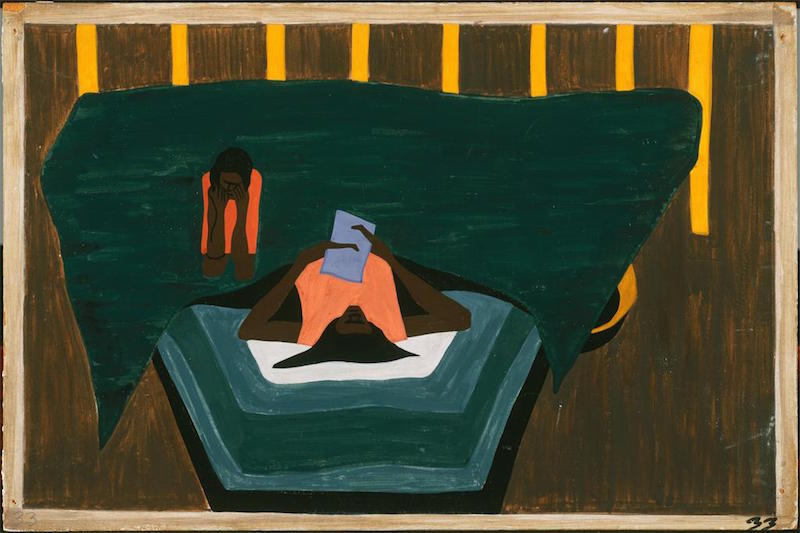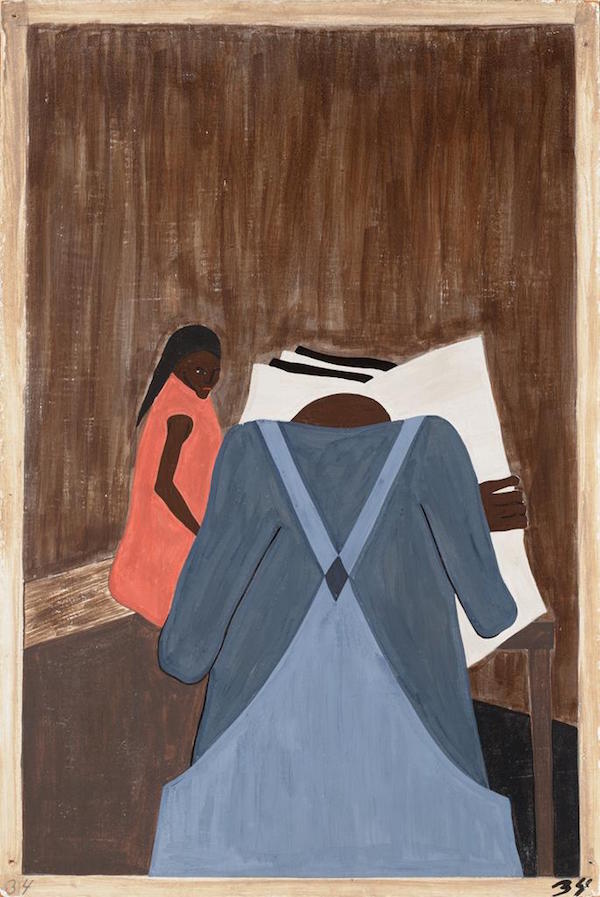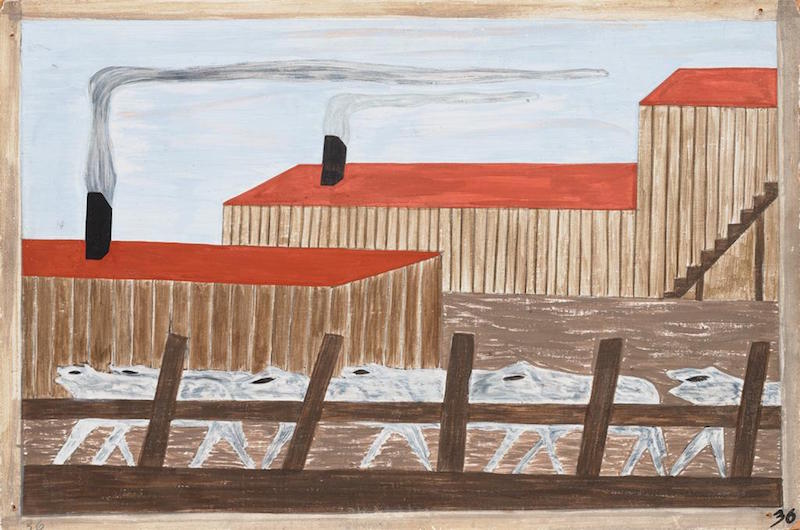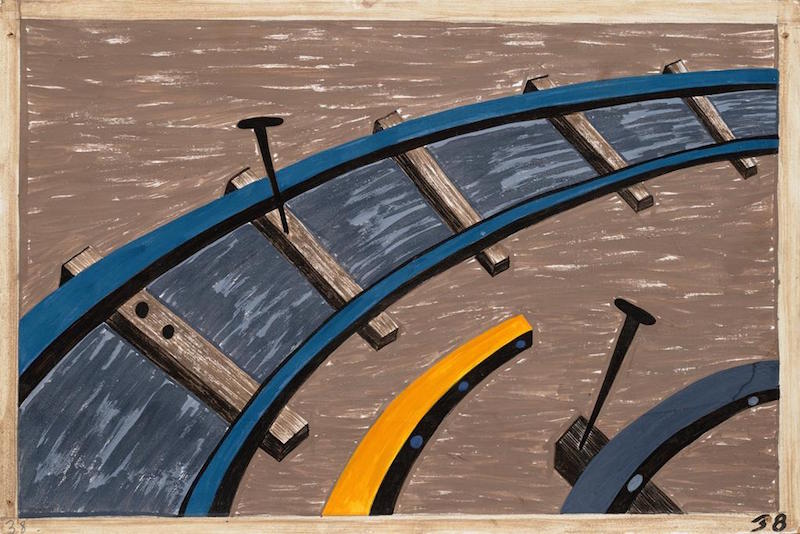 Continuing my posts republishing the paintings from Jacob Lawrence’s Great Migration series, I have reached panels 31-40. Lawrence was one of America’s most important twentieth century painters, though one who has rarely received great public recognition, and the Great Migration, the exodus of African Americans from the Southern states to the Northern cities from 1915 onwards, one of the pivotal events of American history, though again not often recognized as such. Lawrence’s portrayal of that event, and of its existential impact, is perhaps his most essential work, as much an act of historical memory as a work of art. And yet, as Lawrence observed,
Continuing my posts republishing the paintings from Jacob Lawrence’s Great Migration series, I have reached panels 31-40. Lawrence was one of America’s most important twentieth century painters, though one who has rarely received great public recognition, and the Great Migration, the exodus of African Americans from the Southern states to the Northern cities from 1915 onwards, one of the pivotal events of American history, though again not often recognized as such. Lawrence’s portrayal of that event, and of its existential impact, is perhaps his most essential work, as much an act of historical memory as a work of art. And yet, as Lawrence observed,
I don’t think in terms of history about that series, I think in terms of contemporary life. It was such a part of me that I didn’t think of something outside. It was like I was doing a portrait of something. If it was a portrait, it was a portrait of myself, a portrait of my family, a portrait of my peers.
And a portrait of America, too. ‘I do not look upon the story of the Blacks in America as a separate experience to American culture’, Lawrence wrote, ‘but as a part of the American heritage and experience as a whole.’
Laid out across 60 panels, the depiction was as epic as the subject. The seeming naïvety of the paintings allowed Lawrence both to compress and to strip bare the emotional story he wanted to tell. Through the dark, somber backgrounds, and the flashes of primary colours that illuminate them, Lawrence portrayed not only a physical journey, but a spiritual one, too, capturing the sense of the fear, anger, despair and hope that travelled with the migrants. Lawrence used the same colours and figures and shapes throughout the series, forging a sense of unity,and linking the personal stories to the historical drama.
In the first post in the series I wrote both about the Great Migration, and of Lawrence’s life and work. and published panels 1-10. In later posts, I published panels 11-20 and 21-30. Here are panels 31-40, together with Lawrence’s captions that are as simple and as bare as the paintings themselves, and an essential part of the work. If you want to see all 60 panels in one physical space, they are being reunited this year in a special exhibition at MoMA, New York’s Museum of Modern Art, to mark the centenary of the start of the Great Migration.









